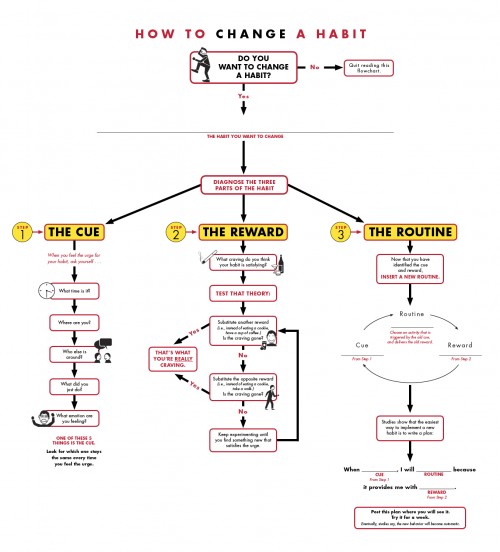This video by Charles Duhigg is promoting his book The Power of Habit . I haven’t read the book but there is a lot of study that draws the same basic model.
A habit is based on an urge to do something that triggers a reward (dopamine shot) in your brain. Every time it happens, the connection between the action and the reward gets stronger.
The urge itself is usually triggered by some outside condition or stimulus.
Take a look at the video, and then the flowchart beneath it (click on the flowchart for the full size version), then we will discuss what this has to do with lean thinking.
Here is the flowchart – click for the full size version:
Why this is important to lean practitioners:
When we talk about “change” we are talking about replacing one set of habitual responses with a different set of responses. Thus, it is important to understand that simply applying willpower is not enough for anyone (no matter how well intentioned) to change their fundamental behaviors.
As you may recall, I am a big fan of the book Switch by Chip and Dan Heath. One of their key points is “Build Habits” and they discuss linking the desired response to a specific trigger.
What we have to keep in mind is that the old responses also have triggers, and many of those triggers are subtle and below the level of awareness.
Duhigg’s model is replacing one habit that does not get the results you want with a different habit that does get the results you want.
The less dramatic this change, the better. That is why it is critical to “find the bright spots” (also from Switch), and even if they are not working perfectly, to structure your future state behaviors around them. For that matter, if you can find even a hint of the behavior you want, it is far easier to shape existing actions than to try to tell people they are “doing it wrong” and getting them to pick up something else.
One of the elements of Deming’s model of “profound knowledge” is “knowledge of psychology.” Take a look at these tools and see if they help you be a more effective change agent.
